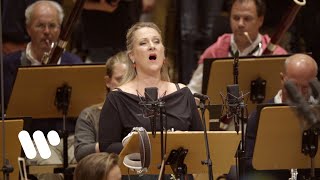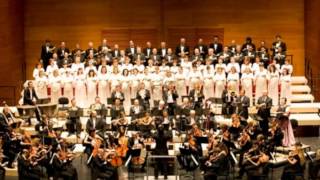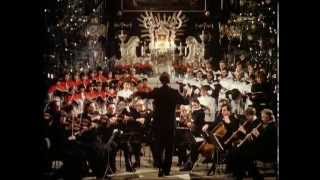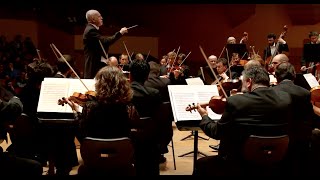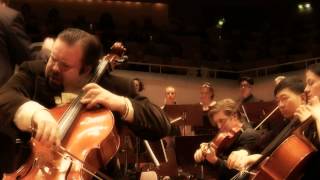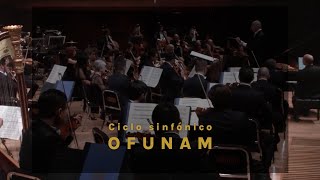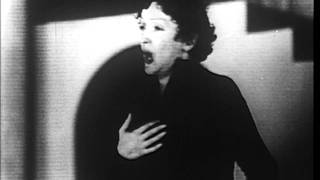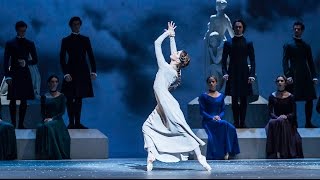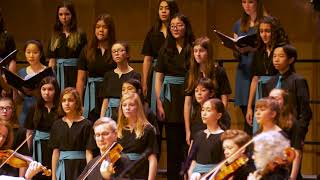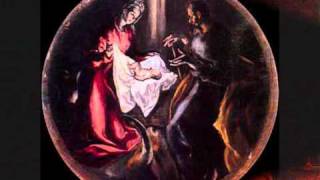
Herriaren aurka Israelgo Estatua egiten ari den
genozidio terrorista salatu nahi dugu.
Abenduaren 21ean Negua hasiko da, eta baita Gabon Kristauak ere.
Musika klasikoan hasiberrientzako iradokizunak
Bideo hau Zisjordanian dagoen Ramallah Friends School-eko ikasleek egin dute. Israelgo armadaren aldetik herri palestinarra jasaten ari den sarraskia salatzen dute, eta mundu honetako biztanle gehienek beste aldera begiratzen dute balioen etengabeko alarde zinikoarekin.
Franz Xaver Gruber (1787-1863) austriar konpositore, poeta eta organista izan zen. Eskolako maisua eta organista izan zen San Nikolas elizan, Oberndorf bei Salzburgen, Salzburgetik gertu dagoen herrian, eta han estreinatu zuen, 1818an, Noche de paz edo Bake gaua gabon-kanta ospetsua. Haren letra Aita Joseph Mohrek idatzi zuen.
Bake gaua edo “Noche de Paz” (Silent Night, Stille Nacht) Austriako gabon kanta ezaguna da, jatorriz alemanez Franz Xaver Gruber austriar eskola maisu eta organistak konposatua; letra Joseph Mohr austriar apaizak idatzi zuen. 2018an, gabon kantuaren bigarren mendeurrena betetzean, Unescok Gizateriaren Ondare Kultural eta Ukiezin izendatu zuen. Abeslari askok grabatu dute abestia, hainbat musika generotan; Bing Crosbyren bertsioa mundu osoko ezagunena da, historiako hirugarren singlerik salduena. Gaur egun interpretatzen den musika eta Gruber-en jatorrizkoa zertxobait ezberdinak dira, batez ere azken notetan.
Gaur Diana Damrau soprano alemaniarrak eskainiko digu, Knabenchor Hannover abesbatzak eta NDR Radiophilharmonie orkestrak lagunduta, Riccardo Minasi eta Richard Whilds zuzendariekin.
Antonio Vivaldi (1678-1741) apaiz, biolin jotzaile eta konpositore italiarra izan zen, apaiz gorria izenez ezaguna (“il prete rosso”). Venezian jaio zen, eta umetan ikasi zuen aitarekin biolina jotzen; 15 urte zituela Seminarioan sartu zen, eta apaiztu ondoren, ia ezin zituen bere erlijio-betebeharrak bete, osasun-arazoak baitzituen; beraz, biolin irakasle izendatu zuten umezurztegi batean, non eskola teorikoak eta instrumentu-eskolak ematen baitzituen. 40 urterekin, Kapera Maisu izendatu zuten Mantuan, eta han idatzi zituen bere Lau urtaro ospetsuak. Handik Milanera joan zen, gero Erromara, gero berriro Veneziara, eta azkenik Vienara, bertan hil zelarik. Bere bizitzan zehar ia 800 obra konposatu zituen, horietatik erdiak kontzertuak, 40 opera, 60 obra erlijioso eta sonata ugari.
Lau urtaroak, Vivaldiren lanik ezagunena, biolin eta orkestrarako lau kontzertuk osatzen dute (kontzertu bakoitza urtaro bati eskainia dago: Udaberria, Uda, Udazkena eta Negua). Garai hartan ohikoa ez zen arren, Vivaldik urtaro bakoitzean irudikatu nahi zuena deskribatzen zuten akonpainamendu-poema batzuekin argitaratu zituen kontzertuak. Ondoren musika programatikoa edo deskriptiboa deituko zenaren adibide goiztiar eta zehatzenetako bat eskaintzen du, elementu narratibo bat duen musika.
Gaur Negua eskainiko dugu, Vivaldik berak azalduta: I ALLEGRO (0'00"). Izoztua, zilar koloreko elurraren artetik haize bortitzaren ufada latzari tiratzea, oinak une oro astinduz korrika egitea, eta hortzak kriskitin harroak egitea. II LARGO (3'34") Sutondoan egotea, lasai eta pozik, kanpoan euriak ehunera bustitzen duen bitartean. III ALLEGRO (5'47") Izotzaren gainean ibiltzea, eta pauso motelean; erortzeko beldurrez, kontuz aurrera egitea. Tinko joan, irrist egin, lurrera erori; berriro izotzaren gainera joan eta azkar korrika egin izotza hautsi gabe, eta txikitu. Ate ferratuetatik irteten dela sentitzea; Siroko, Boreas, eta haize guztiak gerran. Hau negua da, baina halako poza ekartzen digu.
Negu honen interpretazioa, Olga Boico biolin-jotzaileak eskaintzen digu, National Chamber Orchestra of Moldova taldearekin batera Silvia Tabor maisuaren gidaritzapean
Bartolomé María de Ercilla (1863-1898) Durangon jaio zen, Bizkaian, herriko alkate izandako Juan Timoteo de Ercilla y Cenarruzabeitiaren semea; horrek erraztu egin zuen garai hartako euskal kulturaren estandarte nagusietako batzuekin zuen harremana, hala nola Miguel de Unamuno, Felipe Arrese edo Arturo Campionekin. Durangoko Musika Bandaren lehen zuzendaria izan zen, baita Iparraguirre Orfeoiaren sortzailea ere. Bere konposizio-lana irakaskuntzarekin, pianoaren interpretazioarekin, instrumentu eta ahots taldeen zuzendaritzarekin eta baita kultur ekitaldien antolaketarekin ere uztartu zuen, Bilboko Adiskidetasunaren Zirkuluko Musika Gaubelak kasu. Durangon hil zen, heriotza naturalak jota, kroniken arabera, konpositoreak 35 urte besterik ez zituenean.
Mesias Sarritan. 1892ko Eguberri egunean, bere lanik ezagunena estreinatuko da, Mesias Sarritan gabon-kanta herrikoia, hiru ahots mistorentzat idatzia eta tenore-solorako zortzikoarekin. Castor de Gorrichateguiri dedikaturik dago, bere irakasle berriztarrari, eta Durangoko Ospitaleko kapilau Balbino de Garitaonandia abadearen hitzez osatua dago, eta Opus 51. katalogo-zenbakiarekin. Zenbaki honek, 29 urterekin jada, Ercillak gutxienez obra kopuru hori konposatu zuela adierazten du, batez ere pianorako, bandarako, teklaturako eta ahotserako, korurako, orkestrarako eta beste egile batzuen obren moldaketetarako. (Astola aldizkariak argitaratutako Durangoko Tabira Bandako zuzendari Luis Orduña Ridruejoren artikulutik aterata).
Musika klasikoari buruzko iradokizunak
Johann Sebastian Bach (1685-1750) biolin-jolea, organo-jolea, zuzendari eta konpositore alemaniarra izan zen. Eisenachen jaio zen, historiako musika-familia garrantzitsuenean, bere baitan 30 konpositore ospetsu baino gehiagorekin. 1703an lortu zuen Arndstateko Printzearen gorteko musikari gisa egin zuen lehen lana, eta 1707an Mülhausenera joan zen organista gisa. Han, Maria Barbara lehengusinarekin ezkondu zen, eta zazpi seme-alaba izan zituen. 1720an emaztea hil ondoren, urte eta erdi geroago berriro ezkondu zen Maria Magdalenarekin, zeinarekin beste hamahiru seme-alaba izango zituen. 1723an Leipzigera joan zen bizitzera eta 65 urterekin hil zen. Musikagile emankorra, Musikaren Historiako hiru jeinu nagusietako bat da Mozart eta Beethovenekin batera. Eragin nabarmena izan du Haydn, Mozart, Beethoven, Mendelssohn, Schumann, Chopin… eta beste hainbat konpositore ospetsutan.
Oratorioa musika genero dramatikoa da, opera ez bezala, eszenaratzerik, jantzirik, ezta dekoraturik gabe. Normalean ahots bakarlarientzat, koruarentzat eta orkestra sinfonikoarentzat konposatua, batzuetan narratzaile batekin, bere gaia erlijiosoa izaten da gehienetan (Biblia edo Ebanjelioko istorioak, Jesusen edo santuen bizitzak, etab.), baina profanoa ere izan daiteke (heroi mitologikoak, gai historikoak, naturaren ereserkia, etab.). Bere ezaugarri nagusiak, oro har, A) Egitura orokor bat hainbat zatitan, askotan hiru, (batzuetan preludio instrumental bat aurretik duelarik). B) Narratzaile baten presentzia (ekintzatik kanpokoa edo pertsonaia batekin identifikatua). C) Aria- eta errezitatibo-zati kantatuen arteko txandakatzea.
Gabonetako Oratorioa sei kantataz osatuta dago, Gabonetako jaietako egun desberdinetan interpretatzeko: 1.- Jaiotza (abenduaren 25ean). 2.- Artzainentzako mezua (abenduaren 26an). 3.- Artzainen adorazioa (Abenduaren 27an). 4.- Jesusen zirkunzisioa eta bataioa (Urtarrilaren 1ean). 5.- Errege Magoen bidaia (urtarrileko lehen igandean). 6.- Errege Magoen adorazioa (urtarrilaren 6an). Hala ere, normalean osorik edo bi multzotan aurkezten da: 1, 2 eta 3 kantatak alde batetik eta 4, 5 eta 6 kantatak bestetik.
Gaur lehen hiru kantaten multzoa eskaintzen dugu (I: 1'02 ".-. II: 28'18" .-. III: 56'42 "), Nikolaus Harnoncourtek gidatua (1929-2016), barrokoaren eta klasizismoaren musikan espezializatutako austriar zuzendaria, eta aitzindaria, bere obrak garaiko instrumentuekin interpretatzen eta irizpide musikologiko objektibo eta historizistak aplikatzen dituelako.
Juan Crisostomo de Arriaga (1806 - 1826), askok euskal Mozart bezala ezagutzen dutena, Bilbon jaio zen. Bere aita, Juan Simon, Errigoititik zetorren, Gernikatik gertu dagoen hiribildutik, bere ama zen Maria Rosaren jaioterria. Aita, Berriatuko (Bizkaia) organo-jotzailea, Bilbora joan zen, errigoitiar on gisa, aurrera egiteko erabili zituen negozioetan aritzera, eta, horrela, Juan Crisostomok Parisen zuen hezkuntza-garapena ordaindu eta bultzatu ahal izan zuen, han hil baitzen 20 urte bete baino 10 egun lehenago. Kontserbatu ahal izan den ondare musikalak, hiru hari-laukote ditu, 11 urterekin idatzitako Nada y mucho zortzikotea, 1. Obertura, Sinfonía en Re, hainbat aria eta kantata, musika erlijiosoa, O Salutaris hostia eta Stabat Mater; baita opera bat ere, Los esclavos felices, hamahiru urterekin idatzia, zeinaren obertura baino ez baita kontserbatzen, gaur Florian Donderer maisu alemaniarrak gidatutako Santa Cecilia Orkestra Klasikoaren interpretazioan eskaintzen duguna.
Sinfonia re minorrean, gaur eskaintzen duguna, Juan Crisostomo de Arriagaren ondare artistikoaren obrarik paradigmatiko eta adierazgarrienetako bat da. Bere konposizioaren urte zehatza ziurtasunez ezagutzen ez den arren, 1824 inguruan kokatzen da, Arriaga Parisko etapa betean zegoenean. Sinfonia osatzen duen tonalitate nagusiari dagokionez ere, zalantzak daude; Victor Estapé eta Aurelio M. Secoren irakurketa bati jarraituz, sinfonia Re minorreko tonalitatean dago, nahiz eta Re maiorrean sartzeak despistatu dezakeen. Sinfonia lau mugimendutan egituratuta dago: I (0´30´´) ADAGIO. ALLEGRO VIVACE (3´39´´) .-. II (10´25´´) ANDANTE .-. III (18´50´´) MENUETTO: ALLEGRO .-. IV (23´05´´) ALLEGRO CON MOTO.
Gaur Galiziako Sinfonikoak eskainiko digu, Jesús López Cobos (1940-2018) maisu zamorarrak gidatuta.
Aydar Gaynullin, bayanista (baian, XX. mendearen hasieran Errusian garatutako akordeoi kromatiko mota) eta akordeoi jotzaile, abeslari eta konpositorea, Errusiako Gnessins Musika Akademian eta Berlingo Hanns Eisler Musika Eskolan graduatu zen. Nazioarteko 18 lehiaketa irabazi ditu, eta Berlin, Paris, Londres, Amsterdam, Washington eta Moskuko kontzertu areto nagusietan aritu da. Bere bazkide sortzaileen artean daude M.Rostropovich, S.Ozawa, M.Vengerov, A.Netrebko eta zinemako ekoizle, zuzendari eta aktore ezagunak. Gaur egun, filmen konpositore gisa lan egiten du aktiboki, eta sari ospetsu asko irabazi ditu, "Nika" Sari Nazionala barne.
Gaur bere Alina lanaren estreinaldi mundiala eskainiko dugu, Gainullin bera akordeoian, Artyom Dervoed gitarran, Borislav Strulev txeloan, Arkady Shilkloper tronpan, Pavel Novikov bansurian eta Sergey Shamov tiraderan, Staatskapelle Berlineko Ganbera eta Koru Orkestrarekin batera eta David Robert Coleman maisu britainiarrak gidatuta.
Hilda Paredes (Tehuacán, Mexiko, 1957) Mexikoko konpositore garaikide nagusietako bat da, eta sari entzutetsu ugari jaso ditu bere lanagatik. Gaur egun Londresen bizi da eta Irvine Arditti biolin-jotzaile ingelesarekin ezkonduta dago. Txikitatik pianoa eta flauta ikasi zituen; 21 urte zituela Londresera joan zen unibertsitate ikasketak jarraitzeko eta txirulari gisa erregulartasunez aritzeko. Denbora horretan bere konposizio propioak egiten hasi zen, musika herrikoi eta klasikoko moldaketak eginez hainbat talderekin. Ikasle bezala Dartington College of Arts-en graduondoko klaseetara joan zen, non Peter Maxwell Davies eta Richard Rodney Bennettekin ikasi zuen. Guildhall School of Music and Draman graduatu ondoren, arteetan maisutza lortu zuen Londres Hiriko Unibertsitatean eta filosofian doktoratu zen Mánchesterreko Unibertsitatean. Koreografoekin egin zuen kolaborazioak 1988an Britainia Handiko Arteen Kontseiluaren Dantzarako Musika saria jasotzera eraman zuen.
Dartingtongo Lorategiko Abentura Operaren Proiektuarekin kolaboratu eta denbora gutxira, bere lehen ganbera-opera osatu zuen, Zazpigarren hazia izenekoa, Mode Recordsek argitaratua. Bere jatorrizko herrialdeko bizitza musikalean inplikatuta jarraitu zuen, Mexikoko Unibertsitate Nazional Autonomoan irakasten, irratian musika berria ekoizten eta Kalifornia Behereko Orkestrarekin kolaboratzen, Espainiako eta Mexikoko kantu tradizionalak egokituz.
Hildak Londresen bizitzen jarraitzen du, eta han konpositore independentea da. Konposizioa irakatsi du eta katedrak eman ditu Manchesterreko Unibertsitatean (Kaliforniako Unibertsitatea, San Diego), baita Mexikon, Espainian eta Frantziako Centro Acanthesen ere. 2007ko Darius Milhaud irakasle bisitaria ere izan zen AEBetako Mills Collegen. Bere bigarren ganbera-opera, Imajinatutako jauregia, Musik der Jahrhundertek, English National Operak eta New Haveneko Arte eta Ideien Jaialdiak eskatuta, oso txalotua izan zen Ozeano Atlantikoaren bi aldeetan.
Marfilezko igarkizunak. Hilda Paredesek obra hau Alberto Rosado espainiar piano-jotzailearekin idatzi zuen, bere ibilbidean zehar musika garaikidearen exekuzioan espezializatu dena eta beste proiektu batzuetan parte hartzeko aukera izan duena. «Nire asmoa», dio Paredes irakasleak, «haren gaitasun birtuosistikoak eta adierazpen-gama zabala aztertzea izan zen.» «Marfilezko asmakizunak» mugimendu bakarrean pianorako kontzertu gisa eraikitako obra da, baina atal argi eta garbietan banatua. Piano-teknika konbentzionalez gain, partiturak sokak pianoaren barruan zuzenean jotzea eskatzen du, eta horrek teklatuaren bidez lortzen ez diren sonoritateak sortzen ditu. «Marfilezko igarkizunak» UNAMeko (Mexikoko Unibertsitate Autonomoa) Orkestra Filarmonikoak komisionatu eta estreinatu zuen 2019an, UNAMeko Musika Zuzendaritza Nagusiak antolatutako 2020ko Nazioarteko Piano Jaialdiaren esparruan, eta konpositoreak orkestrari eta Alberto Rosadori eskaintzen die. (Bideoaren oinetik jasoa)
Gaur Alberto Rosado pianista espainiarrak eskainiko digu, Massimo Quarta maisu italiarrak gidatutako UNAMeko Filarmonikoak lagunduta.
Denontzako musikari buruzko iradokizunak
Irving Berlin (1888-1989), Broadwayko musikagile eta letragilea izan zen, Bielorrusian jaioa eta AEBetako nazionalitatearekin, AEBetako historia garaikideko emankorrenetako eta ospetsuenetako bat bihurtuz. Berlin izan zen Tin Pan Alley/Broadwayren konposatzaile bakanetako bat, bere abestien hitzak eta musika idatzi zituena. Oinarrizko maila batetik haratago musika irakurtzen inoiz ikasi ez bazuen ere, 3.000 abesti inguru konposatu zituen (beste iturri batzuen arabera 900 abesti), eta horietako asko abesti herrikoi bihurtu ziren, hala nola "White Christmas" (Blanca Navidad) edo "God Bless America". Broadwayko 17 film eta 21 ikuskizun ekoitzi zituen, bakarkako abestiez gain.
White Christmas (Blanca Navidad) Irving Berlinek idatzitako abestia da. Errekorren Guinness Liburuaren arabera, Bing Crosbyk abestutako bertsioa da garai guztietako single salduena, 50 milioi kopia baino gehiagorekin mundu osoan. Bertsioak aldatu egiten dira Berlinek abestia noiz eta non idatzi zuen kontuan hartuta. 1940an idatzi zuen istorio bat da, Arizonako Phoenixeko Biltmore hoteleko igerilekuaren ondoan, eta idazkariarekin batera: "Askotan gau osoan esna geratzen gara idazten: Heldu zure lumari eta idatzi berri dudan abesti honekin bukatzera noa, idatzi dudan abestirik onena da. Inork idatzi ez duen abestirik onena idatzi berri dut! ".
Gaur Michael Bublé eta Kelly Rowlanden interpretazioan izango gara Naturally 7 taldearekin batera.
Mukesh Chand Mathur (1923ko uztailaren 22a, New Delhin - 1976ko abuztuaren 27a), artistikoki Mukesh bezala ezaguna, Indiako playback edo erreprodukzio musikaren abeslari ospetsuenetako bat izan zen Mohammed Rafi eta Kishore Kumarrekin batera; gainera, 1950eko eta 1960ko hamarkadetan "Raj Kapoor" filmetako abestiak interpretatzeagatik aktore ezagunenetako bat izan zen. Askotan bere ahotsa Johnny Walker aktorearentzat erabiltzen zuen, bere film baten bikoizketarako.
Mukesh Ludhianan jaio zen eta hamar anaiko familia bateko seigarrena izan zen. Mukeshek 10. graduaren ondoren utzi zuen eskola eta Herri Lan Sailarentzat lan egin zuen. Ahots-grabazioekin esperimentatu zuen New Delhin lanean ari zela, eta pixkanaka kanturako trebetasunak garatu zituen. Mukeshi 1941ean Nirdosh izeneko film hindu baterako pertsonaia bat eskaini zitzaion; bere lehen abestia "Dil Hi Ho Bujha Hua To" izan zen, Nirdosheko aktore eta abeslari gisa. Hindiz film baterako abestu zuen lehen abestia "Dil Hai Jalta Para jalne De" izan zen.
Édith Piaf (1915- 1963), Édith Giovanna Gassion-en izen artistikoa da. XX. mendeko frantziar abeslari ospetsuenetako bat da, eta errepertorio frankofonoko abesti ugari zor zaizkio, hala nola «La vie en rose», «Non, je ne regrette rien», «Hymne à l'amour», «Mon légionnaire», «La Foule» edo «Milord», mundu osoan ezagunak direnak. Piafek konpositore asko inspiratu zituen eta nazioartean ospea lortu zuten artista gazteen mentorea izan zen. Édith Piaf zinemako eta antzerkiko aktore gisa ere nabarmendu zen, film eta antzezlan askotan parte hartuz. 1950eko hamarkadan, Édith, herrialde askotan ospetsua, Parisko ikono bihurtu zen. 1956an, New Yorkeko Carnegie Hall-en eskaini zuen ekitaldian, Ipar Amerikako ikusleek izen ona eman zioten eta hau dela-eta, sarritan itzuli da bertara.
«La vie en rose» («Bizitza arrosan») Édith Piafen abesti intsignia da. Edithek berak idatzi zuen bere letra, eta Louiguyk (Louis Gugliemi) musika. Abesti honen hitzak maiteminduta dagoen gizon bati buruz hitz egiten du, eta besarkatzen duenean, "maitasun-hitzak" xuxurlatzen dionean eta horrek guztiak bere "penak" nola alde egiten duen adierazten du. Abesti oso herrikoia da, munduko hainbat genero eta eskualdetako artistek birbertsio ugari egin dituzte, eta horietako batzuk arrakasta komertzial garrantzitsuak izan dira.
Carlos Vives (Santa Marta, 1961eko abuztuaren 7a) kolonbiar kantautore, ekoizle diskografiko eta aktorea da, vallenatoaren nazioartekotzearen aitzindarietako bat (Kolonbiako Karibe Eskualdeko genero musikal autoktonoa). Bi Grammy sari eskuratu zituen, eta Amerikako Grabazio Akademiaren Grammy Saria jaso zuen lehen kolonbiarra izan zen. 18 Grammy Latindar sari ere baditu. Billboarden Ospearen Aretoa Saria jaso zuen eta konpositore latinoen Ospearen Aretoan sartu zen, Musa Awards Ikono Saria jasotzeaz gain. Espainian Ondas saria irabazi zuen eta bi aldiz Amigo saria, Asturiasko Printzerriak banatua. 2024an, Urteko Pertsona izendatu zuten Grammy Latindar sariengatik.
Bideo bereziei buruzko iradokizunak
Piotr Chaikovsky (1840-1893) konpositore errusiarra izan zen, San Petersburgoko Kontserbatorioan graduatu zen eta hainbat generotako lanak idatzi zituen, nahiz eta balletekin lortu zituen arrakastarik handienak. 1859an funtzionario lanpostua lortu zuen Justizia Ministerioan, eta hiru urtera utzi zuen, musikan bakarrik aritu ahal izateko. Bere bizitza pertsonala etengabeko krisiz josita egon zen ama hil zenetik eta homosexualitate erreprimituagatik, eta horrek hilabete gutxi batzuk baino iraun ez zuen ezkontza bat egitera behartu zuen. 150 konposizio baino gehiago idatzi zituen: pianorako lanak, laukoteak, suiteak, sinfoniak, kontzertuak, koralak, kantatak, operak eta balletak. 53 urterekin hil zen eta historiako konpositorerik handienetakotzat jotzen da.
Intxaur-hauskailua, maitagarrien ipuin/balleta da, Gabonetako jaietan antzeztu ohi dena. Txaikovskyk San Petersburgoko Mariinski antzokian egin zuen estreinaldia, baina estreinatu aurretik orkestra-suite bat osatu zuen, bere 8 atalekin. Argumentua E.T.A. Hoffmannen ipuin batean oinarritzen da, Alejandro Dumasek egokitua. Istorioa Gabonetan gertatzen da, non mago bat iristen den Clararen etxera txotxongilo kaxa batekin eta Intxaur-hauskailu panpinarekin, benetan printze bat dena. Gorabehera askoren ondoren, dena Clararen ametsa izan da.
Gaur Megan Fairchild eta Joaquín De Luz bakarlariek eskainiko digute, New York City Balleteko Dantza Taldeak lagunduta, Clotilde Otranto irakasle brasildarrak gidatutako Abesbatza eta Orkestrarekin.
The Winter 's Tale (Neguko ipuina) William Shakespeareren izen bereko lanean oinarritutako hiru ekitaldiko balleta da; jeloskortasun-istorio bat da, batzuetan une dramatikoak eta beste batzuetan alaiak dituena, baina amaiera zoriontsua daukana. Gaur, Londresko The Royal Balleteko lehen dantzaria protagonista duen Lauren Cuthbertsonen (1984) eskutik, lehen ekitaldiko eszena batean murgilduko gara. Musika Joby Talbotek idatzi zuen (1971). Britainiar musikagile honek, musika genero desberdinak landu ditu, hala nola, a capella lan koralak, musika instrumentala, zinema eta telebistako soinu-bandak edo balleterako musika.
Bangladeshko dantza folklorikoak eta dantza klasikoak desberdinak dira hainbat alderditan. Tempoa, erritmoa eta dantza klasikoen keinuak konplexuak dira eta praktika luze eta nekeza eskatzen dute. Hala ere, dantza folklorikoak sinpleak eta espontaneoak dira eta belaunaldiz belaunaldi transmititzen dira. Artistek interpretatzeko askatasun handia duten arren, tradizioak ez du oinarrizko forma aldatzen. Dantza folklorikoak banaka edo taldean interpretatzen dira; taldeko dantzak, berriz, arruntagoak dira eta pentsamendu komunitarioa edo kolektiboa islatzen dute. Kantua dantza hauen funtsezko zati bat da. Dantzariek abesten dute batzuetan, baina beste batzuetan beste talde baten erritmoan dantzatzen dute. (Banglapediatik jasoa)
Son, Kuban (Son cubano eta Son montuno), Mexikon (Huapango llamado Son huasteco, Son istmeño, Son arribeño, Son jarocho, Son calentano, Son de artesa, Son de concheros, Son abajeño, Son de mariachi, Son de tamborileros de Tabasco, Jarana yucateca y Chilena) eta Nikaraguan (Son nica) lantzen diren jatorri afro-karibear-mestizoko hainbat musika-generoren izen arrunta da.
Son de la Negra Mexikoko mendebaldeko konposizio tradizionala da, eta Jalisco hegoaldean du jatorria. Bere bertsio ezberdinengatik da ezaguna Son hau, bereziki mariatxiarena. Nazioarteko ospea lortu zuen Blas Galindo musikagile jalisziarrak, 1940an, Sones de mariachi bere ganbera-orkestrarako obran bildu zuenean. Lan hori New Yorkeko Arte Modernoko Museoaren Mexikoko Musika Programan estreinatu zen. Jesús Jáuregui etnologoaren arabera, bere historian zehar aldaketak eta konponketak egin zaizkio, egile bakar baten lana izan ez zela frogatzeko, ezta garai berekoa ere. Era berean, Mexikoko folklorearen edo Mexikori buruzko folklorearen adierazgarri bihurtu da nazioartean. Izan ere, ohikoa da mariatxi bat edozein ekitalditan oinez sartzea eta konposizio hori interpretatzea.
Gaur Tecalitlan-eko Vargas Mariatxiak eta Nuevo Leóngo Dantza Folklorikoko Konpainiak eskainiko digute.
Umeentzako musikari buruzko iradokizunak
Testu hauek egiteko Wikipediako hainbat artikulu eta Adimen Artifizialeko informazio puntualak erabili dira.
Videomusicalis-eko testuak, euskaraz, gaztelaniaz eta ingelesez eginda daude.





